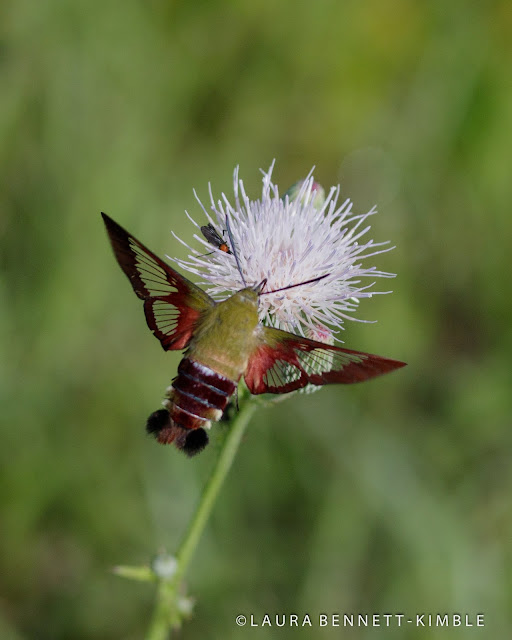National Moth Week: Hummingbird Moth (Hemaris thysbe)
 |
| Adult Hummingbird Moth (Hemaris thysbe) © Laura Bennett-Kimble |
The hummingbird moth—along with the similarly named hummingbird hawk moth that lacks transparent wing spots—is a member of the sphinx moth family (Sphingidae), which also includes the Pluto Sphinx moth. These creatures resemble hummingbirds in both their shapes and movement as they hover while sipping nectar from blossoms. The beating of their wings can even make a humming noise, similar to that of the birds.
You can attract the moths to your neighborhood with both nectar and larval host plants. These plump moths seek out host plants such as honeysuckle, snowberry, hawthorns, cherries and plums for their larvae. And in addition to thistle blooms, nectar sources for the adult moths include various native plants, such as beebalm, blueberry, and rockland lantana (Lantana depressa var. depressa).
 |
| Hummingbird Moth larva. Photo by Ansel Oommen, CC BY-NC 4.0 |
The hummingbird moth, which has a wingspan of up to just over 3 inches, is a wide-ranging species, with verified sightings from Alaska and the Northwest Territories east to Maine and Newfoundland and south to Florida and Texas.
The 8th annual National Moth Week is quickly coming to a close, but you can still participate in a citizen science project through iNaturalist and contribute to the body of knowledge about moths that have lifecycle relationships with Florida’s native plants. For more information, visit National Moth Week.
-----
[1] Hammer, Roger. 2004. The Lantana Mess: A Critical Look at the Genus in Florida. The Palmetto 23(1). p.21-23. <link>



Comments